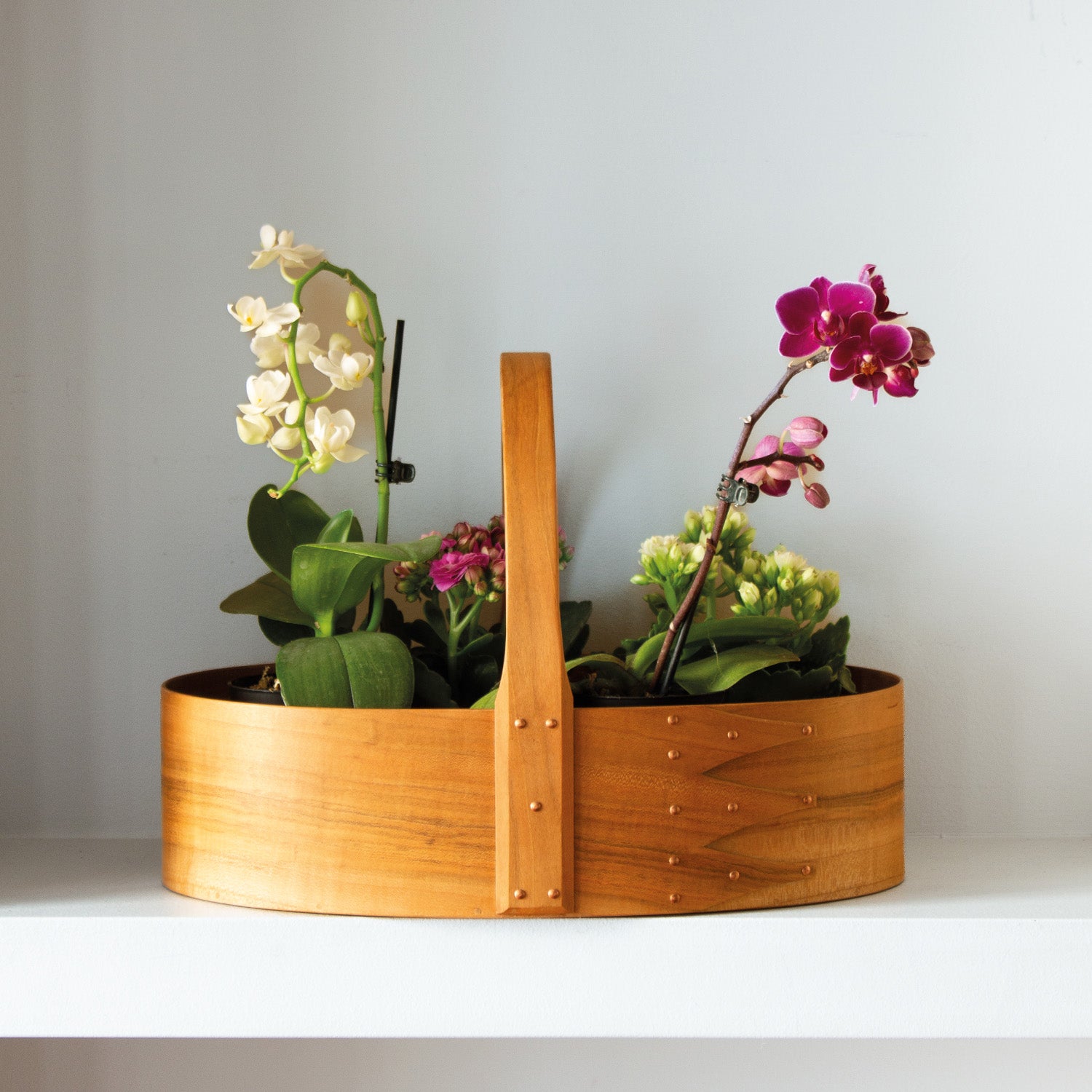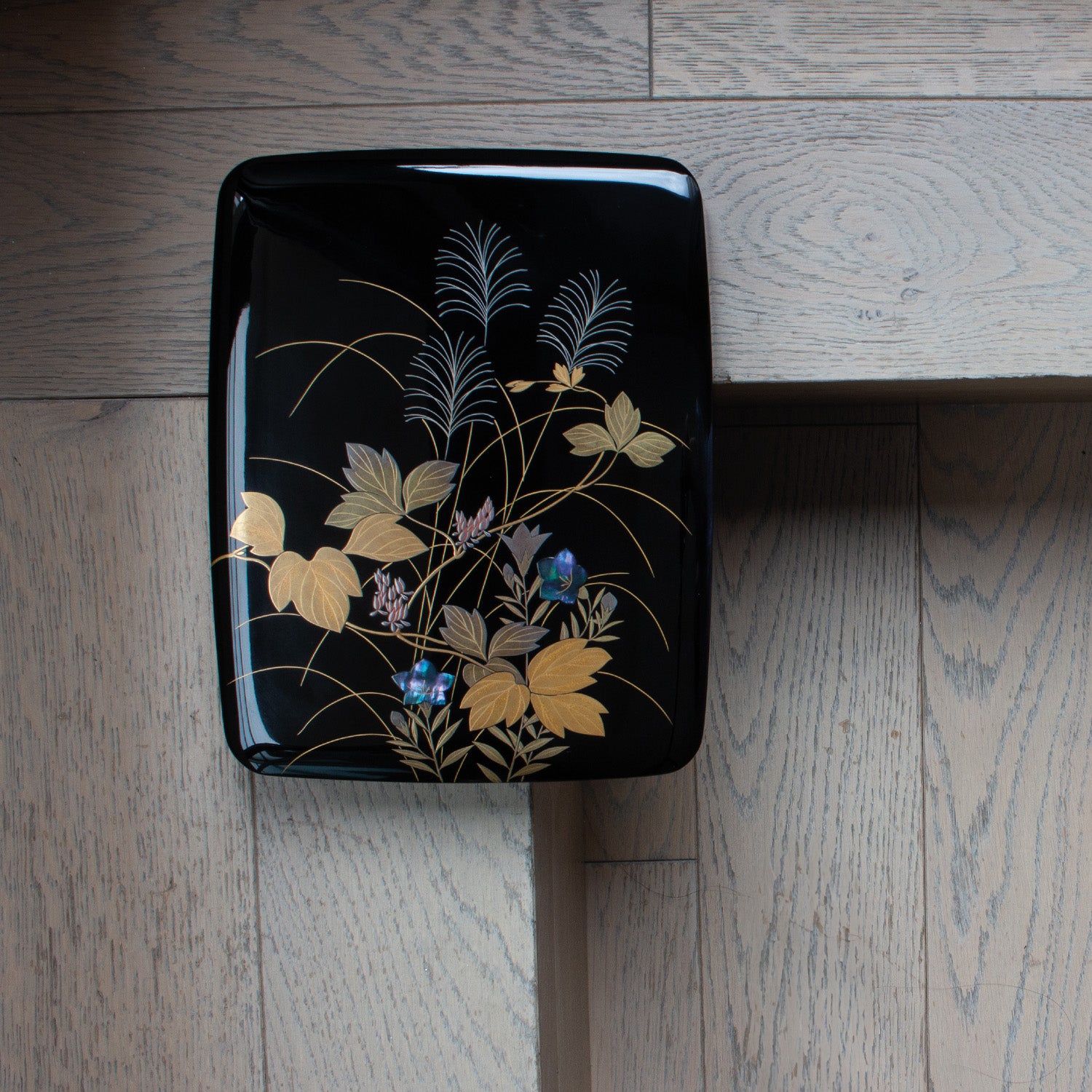
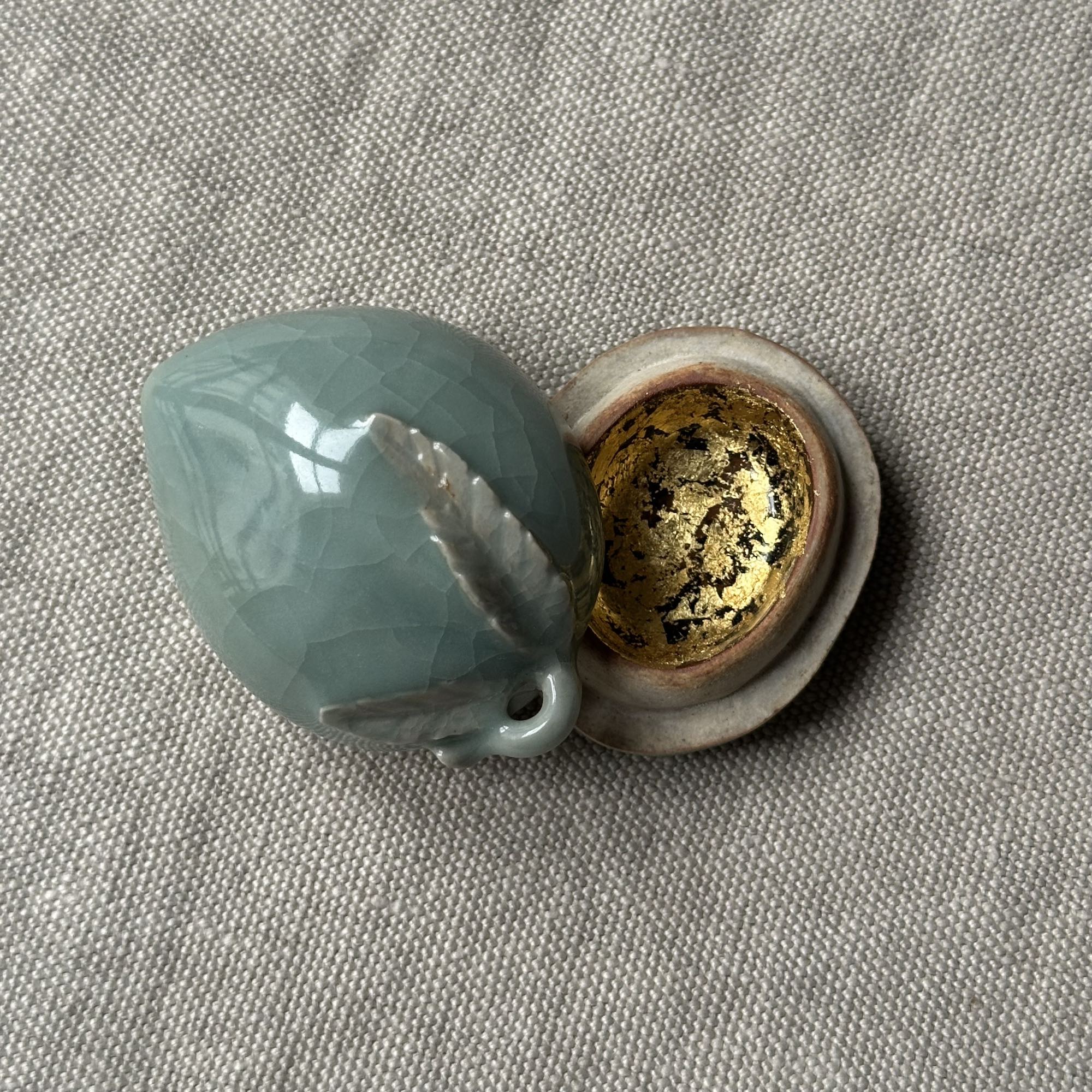

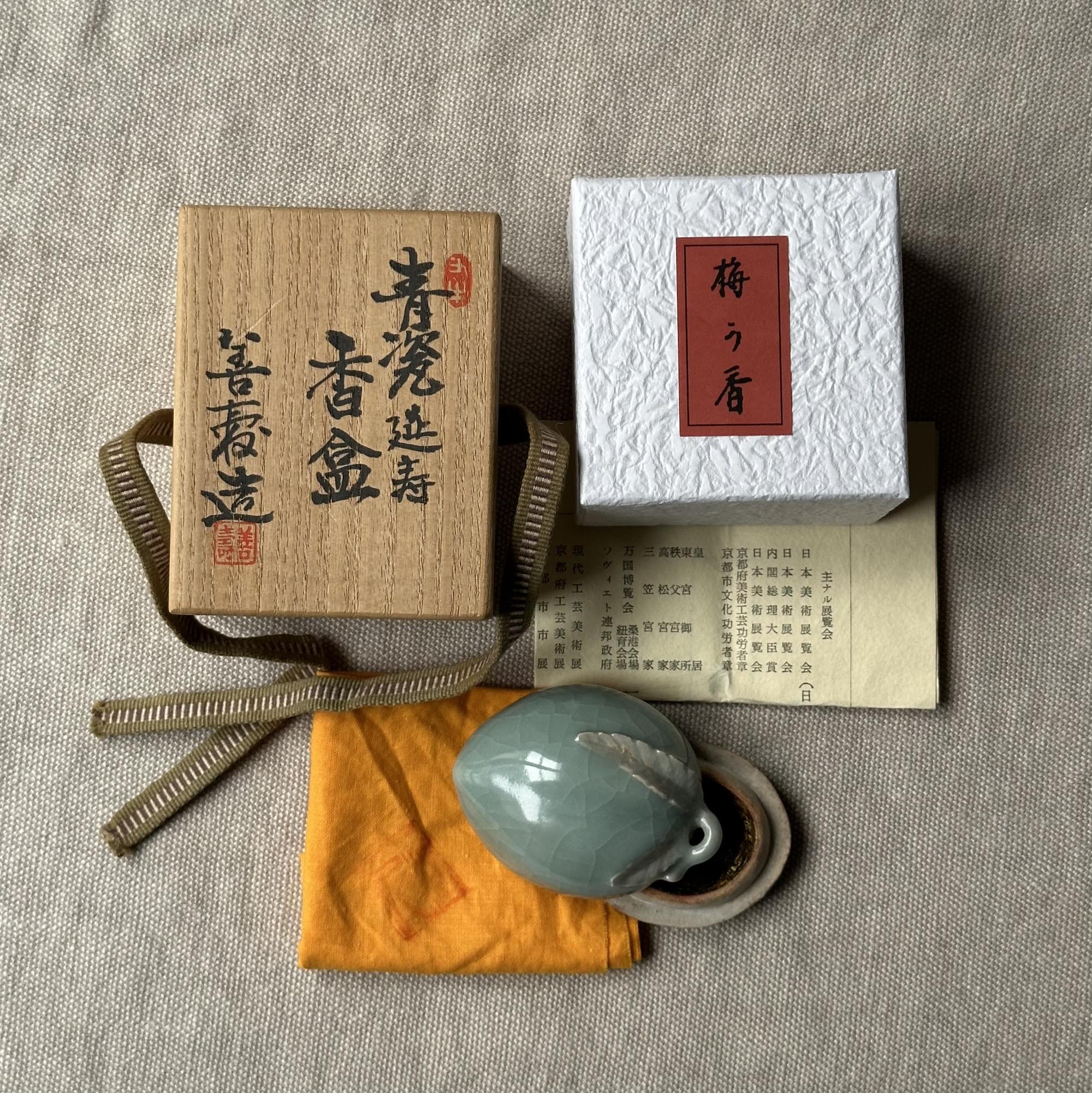
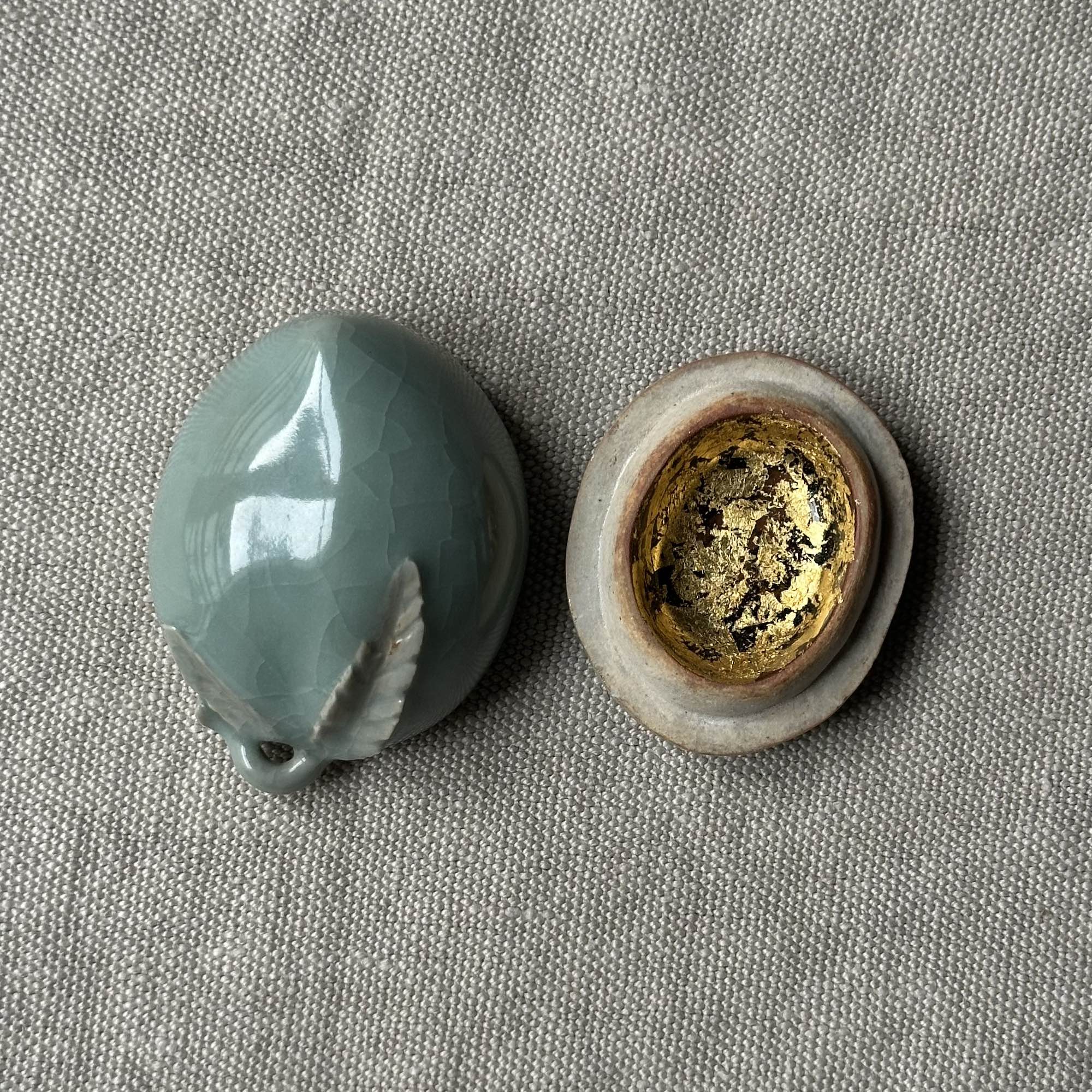

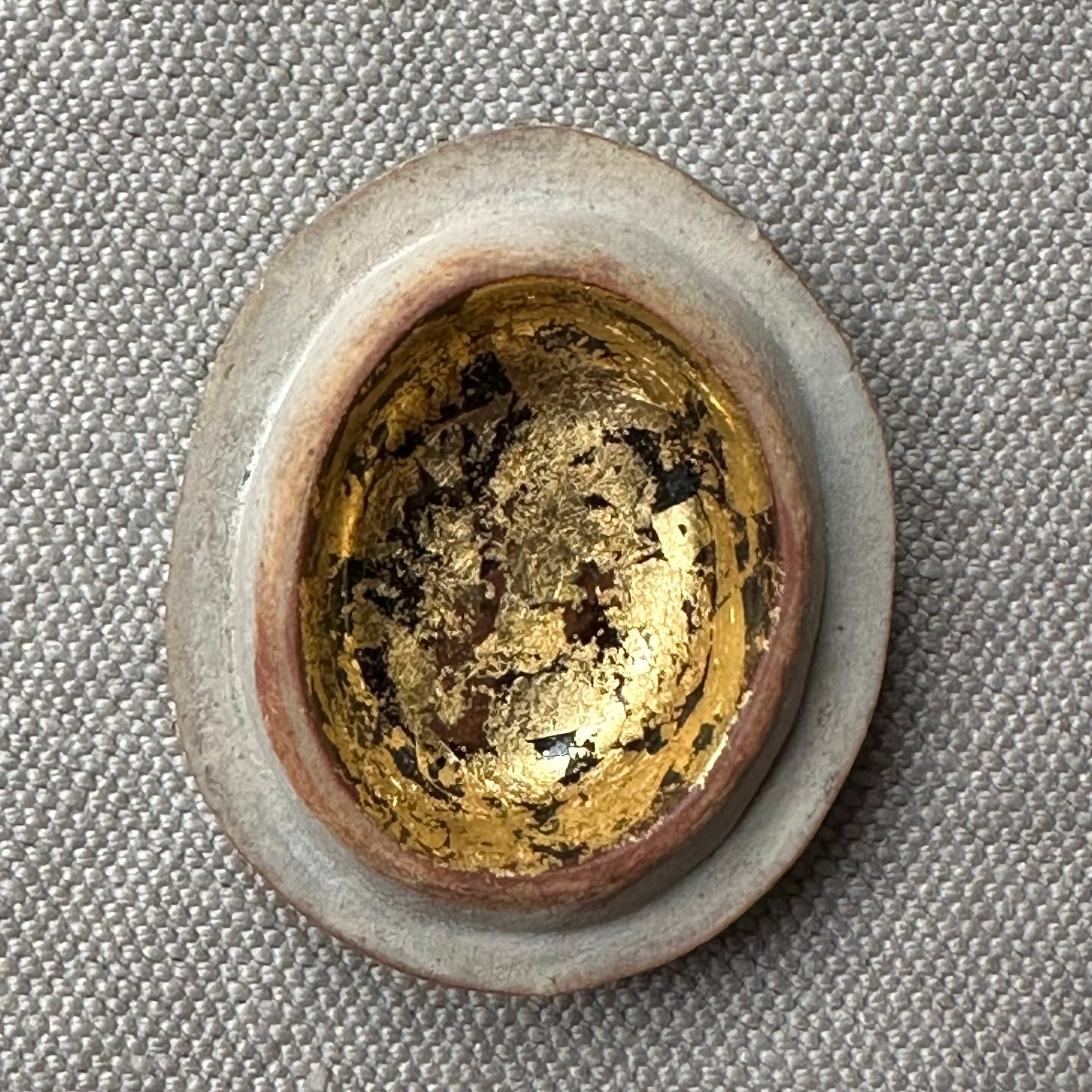

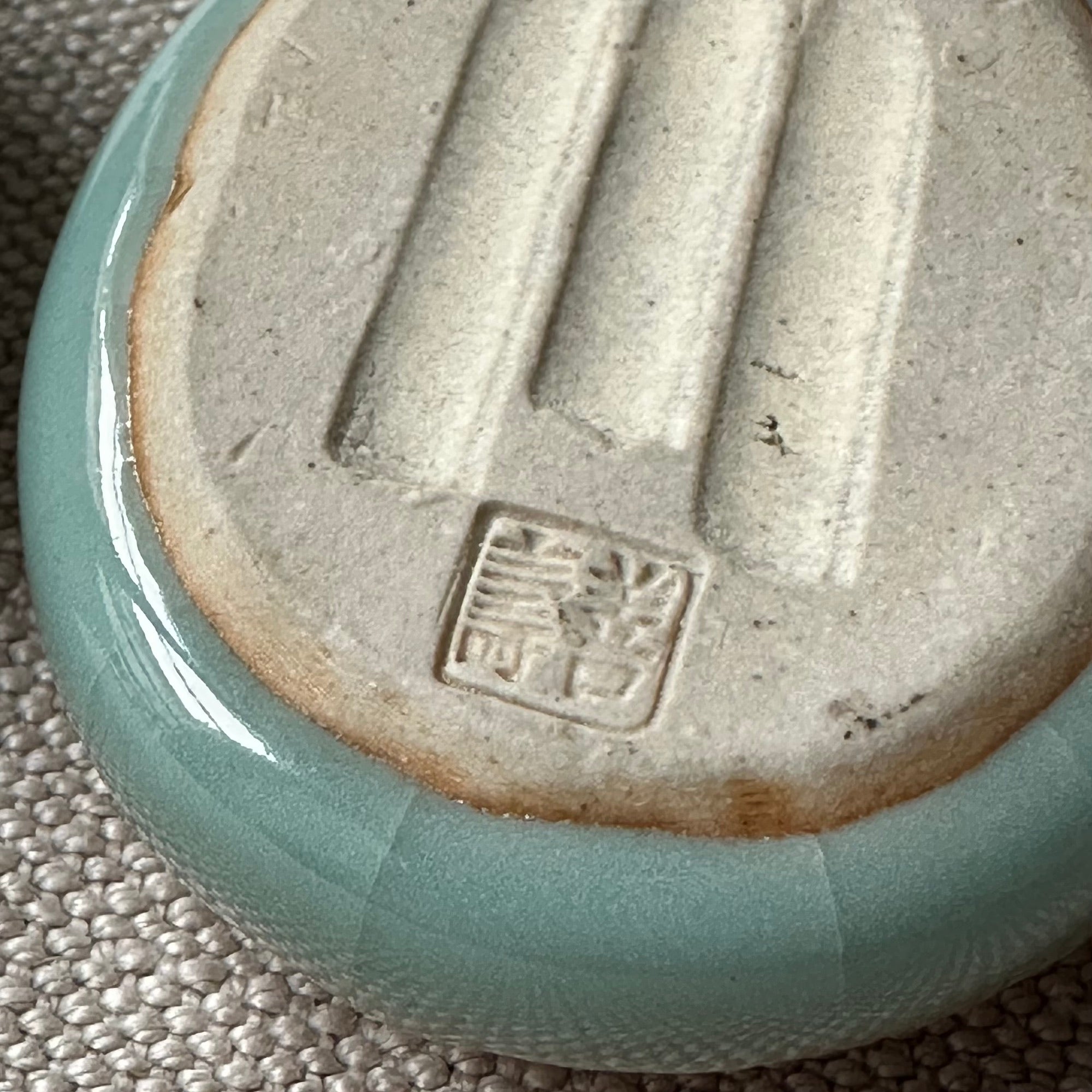
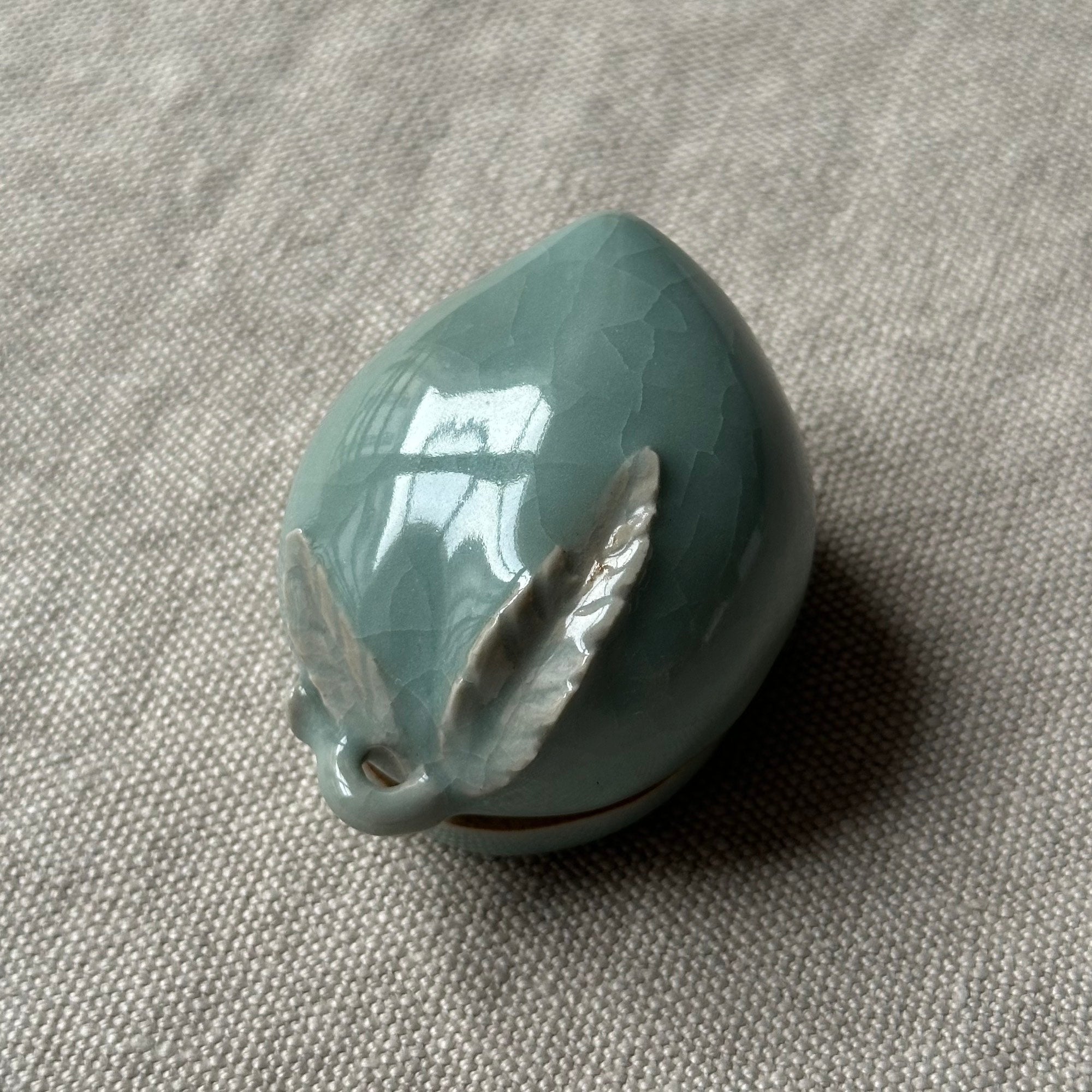
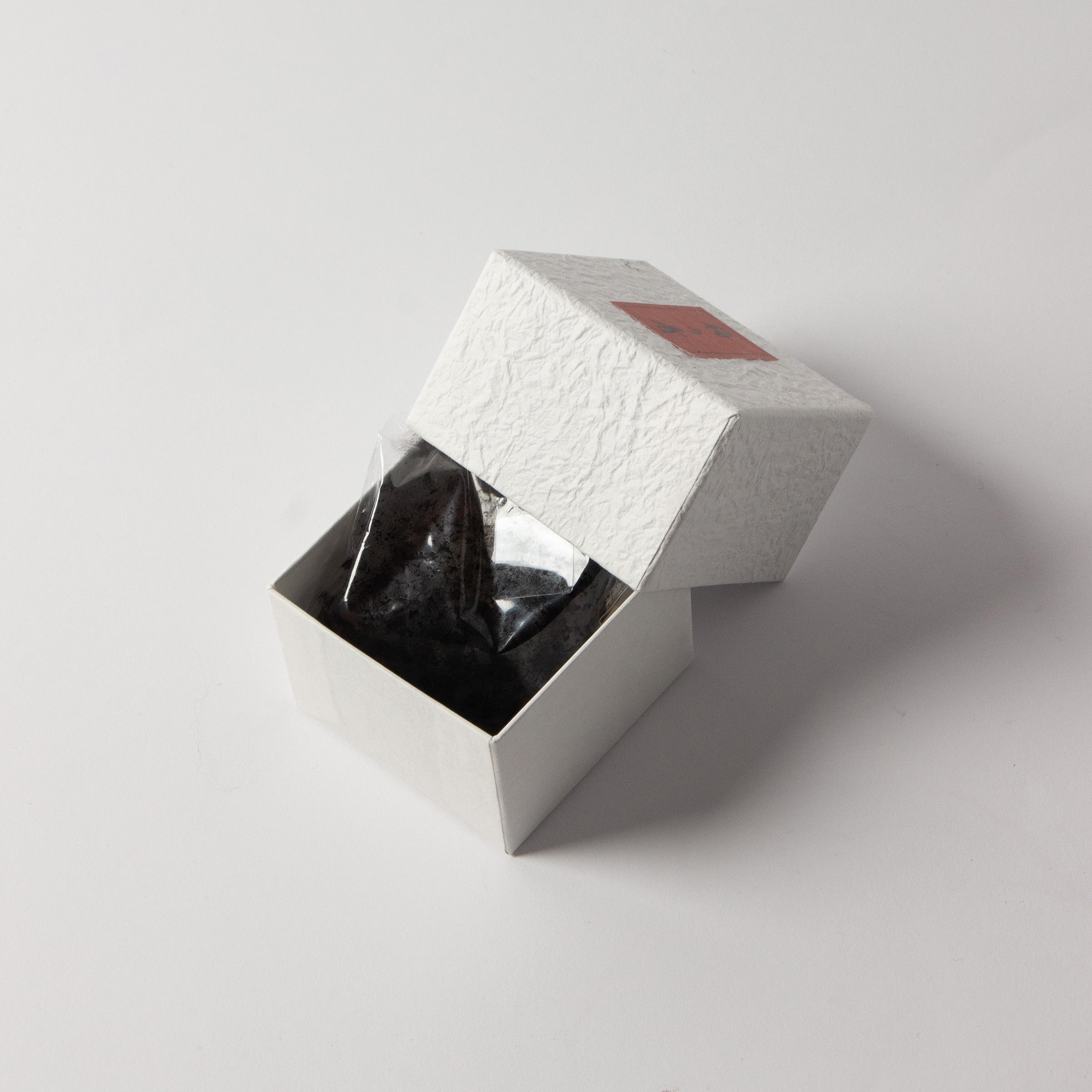
Zenju Miyashita ceramic kōgō and Japanese nerikō (incense balls)
In the art of Japanese incense, the kōgō is a small, precious box that preserves and showcases the nerikō, refined incense tablets made from precious woods and spices. Together, they embody a sensory tradition rooted in the elegance of gestures and the subtlety of fragrances, which Atelier Ikiwa was keen to celebrate by offering a carefully curated selection of superb kōgō, here crafted by the ceramicist Miyashita Zenju, accompanied by their nerikō boxes to introduce this little-known art.
The craftsman
Zenju Miyashita (1901–1988) was a major Japanese ceramist in the celadon tradition. Trained in ceramics from a very young age, he dedicated himself to seiji (Japanese ceramics) and developed a style rooted in the Kyōyaki tradition of Kyoto while engaging with the legacy of ancient celadons. From the 1930s onward, his pieces were regularly selected for the Shin Bunten and later the Nitten, Japan's major national art exhibitions, where he notably received the Prime Minister's Prize. He was also recognized as a cultural figure in Kyoto and sought after as a juror in numerous exhibitions. A specialist in white glazes and celadon, he was prized for the purity of his glazes and the balance of his forms. He was also the father and teacher of Miyashita Zenji, a ceramist whose works are now held in several major international museums, highlighting the importance of his legacy.
The technique and the decor
This kōgō has an ovoid shape reminiscent of a small fruit, extended by two finely modeled leaves that meet at the end of the lid. It is made of seiji celadon, whose gray-green glaze reveals a deliberately sought-after network of regular cracks that catch the light and give depth to the surface. The piece's title, Enju, means "to prolong life" and refers to the decorative vocabulary where fruit is associated with longevity, thus reinforcing the object's precious nature within the context of incense. Inside, the body is entirely covered with gold leaf applied in irregular fragments, creating a vibrant contrast between the cool softness of the celadon and the warmth of the gold. The kōgō is signed at its base with an engraving bearing the seal of Miyashita Zenju.
The nerikō
To enjoy the kōgō as intended, a box of nerikō is also included. This box contains thirty-six nerikō beads, each composed of a delicately fragrant blend based on sandalwood, crafted by one of Kyoto's oldest incense houses. To use them, place two or three in the kōgō and leave the lid slightly ajar. To stop the fragrance, simply close the lid. The nerikō beads should be replaced when they become dry. It is important to store unused nerikō in the tightly sealed plastic bag to prevent them from drying out.
To discover the art of Japanese kōgō and nerikō, we invite you to read the article we wrote on the subject, available via this link . Other kōgō are available on the site; feel free to browse our selection.
Practical information
Place of manufacture
Japan
Dimensions
Length 6cm - Width 4.5cm - Height 4.3cm
Weight (with box)
178g
Materials
Celadon ceramic
Period: Shōwa era (1926-1989)
Accessories
For the kōgō: a protective box made of paulownia wood tomobako bearing the inscription of the work, the signature and the seal of the craftsman, as well as a protective cloth tomonuno bearing the seal of the craftsman, accompanied by an information document on the ceramist.
For the nerikō: box containing thirty-six nerikō marbles.
Usage tips
Place two or three nerikō beads in the kōgō, leave the lid slightly ajar to diffuse the fragrance or closed to stop diffusion. Replace the beads when they become dry and store any unused beads in their airtight bag. Keep out of reach of children and pets. Do not ingest. Avoid prolonged skin contact. If you experience discomfort or sensitivity to the scent, discontinue use. Store away from heat, humidity, and direct sunlight.
DELIVERY
Delivery
Free delivery in mainland France for purchases over €200. Orders are generally dispatched within 2 working days, except in special cases, as indicated in the banner at the top of the website.
Precious objects are wrapped in a cloth tied according to the precious Korean art of pojagi. Some exceptions apply, particularly if the objects are large. Learn more >
Detailed delivery information is available via this link >
Your invoice will be sent by email
Payment methods
By card (Stripe operator): Visa, MasterCard, Discover, American Express.
Secure card payment with 3D Secure.
By PayPal, Apple Pay, Google Pay and Shop Pay
Returns and exchanges
14 days to change your mind.
Choose options











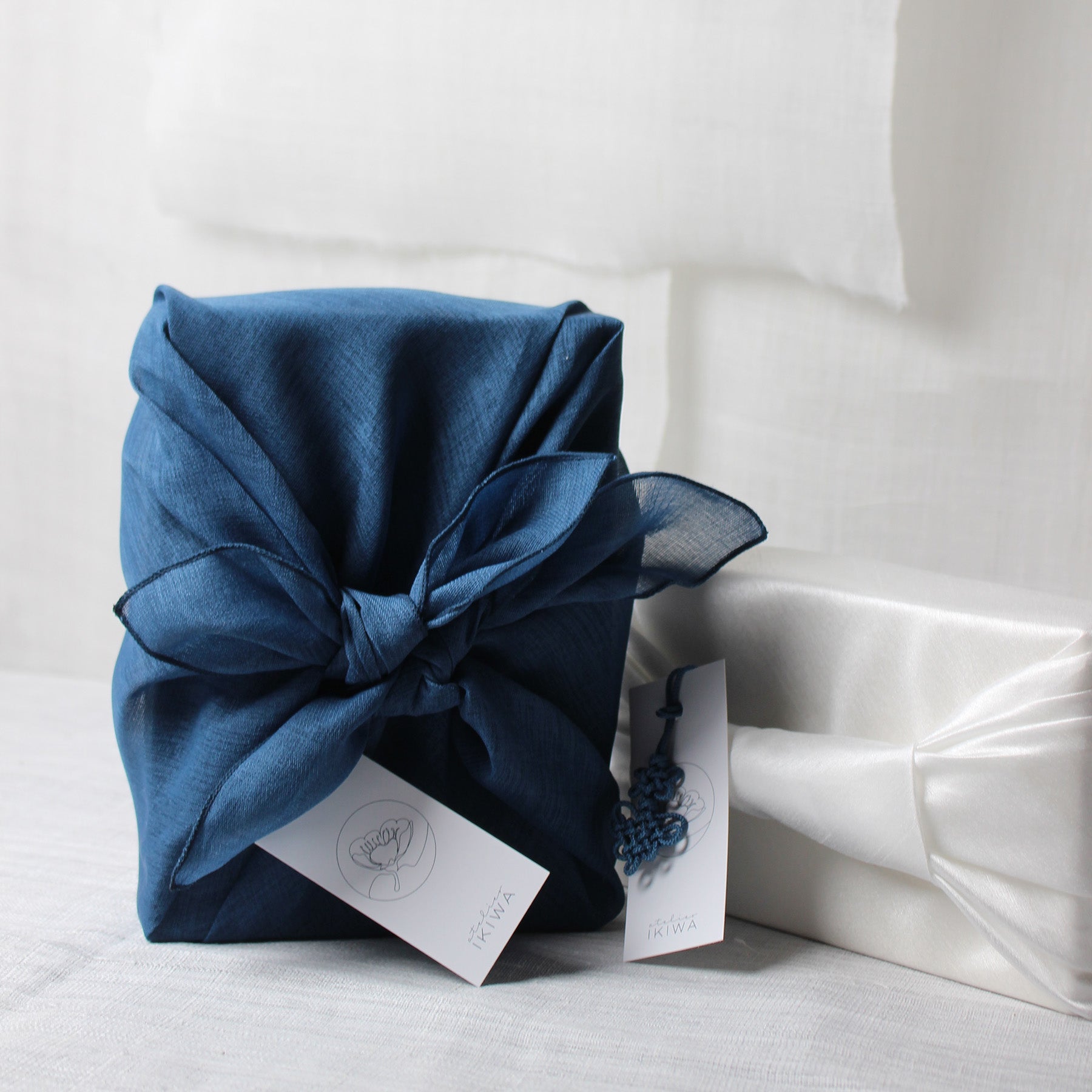
The art of wrapping
The precious objects are wrapped in a beautiful cloth beautifully tied according to the little-known art of Korean pojagi. Details and conditions >


